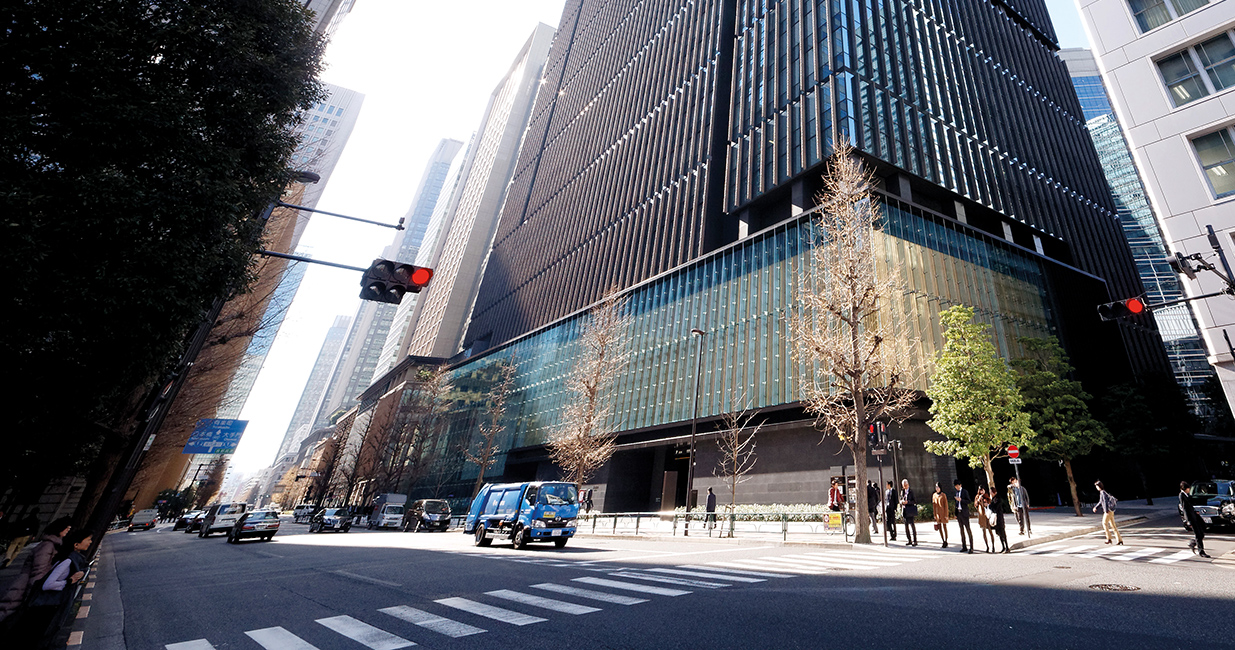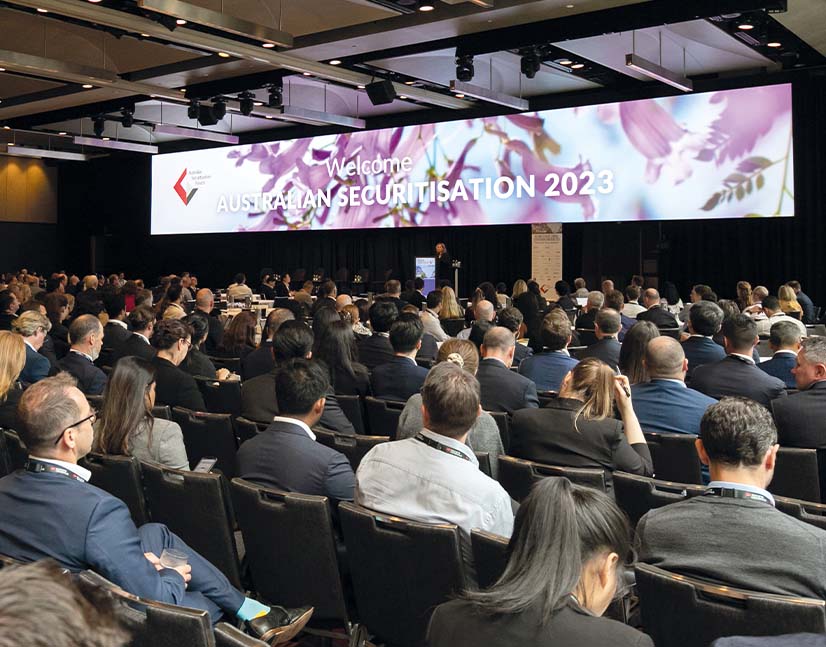
Conditions change but Japanese investors stay locked in to Australian fixed income
In February, KangaNews and Mizuho Securities hosted their Japanese investor roundtable discussion in Tokyo for the first time since the pandemic. Much has changed and there are prospects of further fundamental shifts on the horizon – including policy normalisation – but these investors remain a core component of the Australian dollar fixed-income market.
AUSTRALIAN ALLOCATIONS
Davison Has investors’ exposure to Australian dollars increased, decreased or stayed broadly the same over the past 12 months – and why? Is the story similar for other non-yen currencies, for instance US dollars?
TAKEI Our exposure to Australia has decreased in the last 12 months, especially in the last 3-4 months, owing to the monetary policy backdrop. Recently we have seen the attractiveness of the Australian dollar fall relative to its peers. This means we are currently taking a wait-and-see approach – waiting for the rebound in attractiveness.
In a relative sense and in the case of the WGBI [FTSE World Government Bond Index], we are currently underweight Australia and overweight the US and some European countries, including Italy and Spain.
FUND MANAGER We are an asset manager that follows the WGBI, in which the Australian dollar component – and therefore our Australian dollar exposure – is relatively small. We do not intend to take a big risk in this area.
On the other hand, assets under management (AUM) of semi-government and other funds that specialise in Australia are increasing. Hedging cost is currently more favourable in Australian dollars than US dollars, and semi-government bonds are an attractive asset due to being triple-A rated.
My mandate also includes global infrastructure. In the case of Australia, investors need foreign-denominated funds as a risk-management tool and this is Australia’s main strength: the credit is very stable when it comes to infrastructure investment.
UEDA We sell insurance products denominated in foreign currencies and we need to make investments accordingly. In 2023, the US interest rate increased and US dollar denominated insurance products performed well as a result, leading to an increase in AUM. Insurance products denominated in Australian dollars also performed well, for the same reason.
TOKUDA Our AUM has decreased over the past year but our exposure to Australia has increased slightly. Although US dollar denominated investments also increased slightly, euros decreased significantly – resulting in a decrease in overall AUM.
KANEKO Our Australian dollar exposure has marginally increased. We invest in unhedged sovereign debt because the hedging cost is very high. We think the Australian dollar-yen exchange rate has relatively limited upside compared with other currencies, and Australian semi-governments and SSAs [supranational, sovereign and agency issuers] are attractive relative to other bonds.
TOKUI Over the past 12 months, our exposure has been declining in Australian dollars, US dollars and euros. This is because we hedge our Australian dollar exposures and the hedge cost has been increasing as a result of rate hikes. Our AUM has decreased accordingly.
NAKANE In the past 12 months, we have continued to invest in Australian dollars and our AUM has increased. This is because absolute spread level is our priority and spreads have remained at wide levels during this period. In US dollars, we invest when spreads are wide enough. But some of the bonds we held have been redeemed and we have not had opportunities to replace, so our US dollar AUM has decreased accordingly. Other currencies have remained more or less the same.
AIBA Investments in Australian dollars have remained flat in the last 12 months. Our policy is to invest the foreign currency deposits we receive from our clients. Our investors have found the US dollar to be the most attractive option in recent times but Australian dollar AUM has remained flat rather than falling.
We seek variable spread product and as Australian dollar RMBS [residential mortgage-backed securities] and ABS [asset-backed securities] are unique products globally, we would like to increase our exposure to these. However, our challenge is that we first need to obtain deposits as the source of our investments.
SAKURAI Like Aiba-san, our funding base is retail investors’ deposits. Trends in deposits have an impact on our investment capability. Australian dollar deposits have been flat in the last 12 months, meaning AUM has also remained static. For US dollars, credit and securitised product AUM has been marginally declining, but has increased in rates product.
Davison There does not seem to be a single story here, with investors’ view on the Australian market depending on whether or not they hedge, and of course what sort of funds they manage. Overall, though, Australia appears to be holding firm without being a particular growth or withdrawal story. Does what we have heard from investors match with what Mizuho Securities has observed when it comes to Japanese demand for Australian dollars?
Introducing the investors
Participants at the KangaNews-Mizuho roundtable came from the asset management, bank and life insurance sectors. The investors introduced themselves – and their interaction with the Australian dollar market – in their own words.
SAKURAI This is my second time at this discussion and Sony Bank’s third participation in the roundtable. I have been covering Australian dollar credit and securitisation since 2010, first at SBI Sumishin Net Bank and now at Sony Bank, where we continue to grow our assets under management (AUM) in residential mortgage-backed securities (RMBS) and asset-backed securities (ABS).
AIBA Our coverage is almost the same as Sony’s. We look mainly at RMBS and we are currently considering expanding into ABS.
NAKANE I belong to the structured finance division, which also covers project and aircraft finance. I am in charge of credit investment, including in Australian dollars. I don’t have any particular restrictions but focus predominantly on RMBS and ABS as the main products.
TOKUI I look after high-grade product and, in particular, sovereign investments. Each member of our team looks after a different jurisdiction, and I am in charge of Australia. This is the first time I am participating in this roundtable.
Mainly I cover Australian Commonwealth government bonds (ACGBs) as well as semi-government, and supranational, sovereign and agency (SSA) issuers.
KANEKO I am in charge of investment in foreign highgrade bonds in jurisdictions including Australia, New Zealand and Oceania – specifically government, SSA and semi-government issuers in Australia.
TOKUDA I am the balanced fund investment specialist in charge of foreign bonds focusing on Oceania as a region. My investments are in semi-governments, SSAs and ACGBs, however semigovernments and SSAs are our main investment target.
UEDA I’m in the asset management division covering investments in US and Australian dollars – in Australia this is also via ACBGs, semi-governments and SSAs. Currently, we don’t have a big exposure to securitised product.
FUND MANAGER We organise investments into different products, so I look after semi-governments, SSAs and ACGBs, as well as securitised product and corporate credit, including infrastructure debt.
TAKEI I have attended this roundtable discussion on behalf of Asset Management One since its inception. I am in charge of developed nation bonds. Our customers are pension funds, retail investors and institutional investors such as regional banks. Primarily, I cover the FTSE World Government Bond Index – in Australia, this predominantly means government bonds but semi-governments and SSAs as well.
I started investing in Australian dollars in the 1990s and the spreads on offer are relatively tight compared with then. But I hope there will be new opportunities in the future.
LEONG As we have covered around the table, Japanese investors invest in Australian dollar assets in a number of ways. Deposits and policy sales have been flat to net positive and while Australian dollar hedging costs remain elevated, they are still relatively attractive compared with other currencies – including US dollars. I certainly agree that there is not a single story here.
On the other hand, there are other, structural, factors – not least including the normalisation in yen bond yields – that are playing a role in driving structural change in the market.
Davison For those investing on a hedged basis, data suggest hedging costs have been elevated for some time but have started to improve in recent months. Do investors share this view and is the path to hedged investment improving?
TAKEI We have hedged the fund that uses the WGBI. In the last year, the yield curve for many countries – and this is not limited to Australian dollars, it includes Canada for example – has been inverted. This means investing on a hedged basis has been costly. However, relatively speaking, the Australian sovereign curve is positively sloped and the potential cost is much less in Australian dollars.
This environment overall has undoubtedly been more challenged over the past year. Hedging costs are still elevated. However, we can be reasonably confident that the Reserve Bank of Australia (RBA) cash rate will decline in the coming months. As such, our decision was not to cease our investments but to hunker down. We also think about capital gains and considered whether we should wait until the environment normalises.
FUND MANAGER Life insurance companies may invest on a fully hedged basis or take foreign deposits. But some of our clients in semi-government funds are partially hedged instead of requiring full hedging. Rather than making judgement calls, we use quants so our hedges can be controlled on a monthly basis and avoid a reduction in AUM. We try to maximise between returns and hedges.
TOKUDA Currently, we are not very active in investing on a hedged basis – this is not limited to Australian dollars but in general. However, in the future – if the environment changes – carry may become an option. If it does, Australian dollars and US dollars would be our first candidates.
A WORLD OF RISK
Davison There are a lot of risk factors in the global economy and geopolitics over the coming year. But markets seem to be ‘priced for perfection’, especially in the US and when it comes to the success of central bank policy. Is it time to be cautious, at least on a relative basis? What is investors’ outlook for 2024 in general and how is this affecting allocations and preferences, particularly for currency, credit and tenor?
TAKEI From a risk perspective, our outlook is for a bumpy year. There are elections all over the world, and the US election in particular will be a big focus. We are concerned that if Trump is re-elected, the existing systems we have become accustomed to – not only in the US but in Japan, China and Russia – will cease to function. Such destruction in our existing systems is a significant risk. In fact, the phrase ‘if Trump…’ has become very familiar in our thinking.
We are already seeing the impacts of these types of risks from the situations in Ukraine and Israel, where the established system does not work anymore. The way things are playing out we might have a new order in the world from 2025.
No-one expected the global COVID-19 pandemic, and the reopening of the economy was not expected either – and our bumpy ride could continue for another 4-5 years.
When it comes to the impact on our investment strategy, some people are predicting a recession and others a soft landing. An important question for us is: if there is a recession, will it be a linear descent? Perhaps not – it is also possible that there will be a tipping point.
I believe there will be a recession. So much fuel has been accumulated, and the question is who will fire the fuel. In December 2007, the US was already in recession – but stock prices were still performing. In 2024, many central banks will soon start to cut rates, but lower interest rates don’t solve everything.
We foresee bull steepening of the yield curve. Considering the combination of yield curve strategy and duration strategy, we think the 5-10 year part of the curve is place to be – and we are preparing for this by taking corresponding exposures. Regarding duration, we are cautiously overweighting. We don’t have exposure to ultra-long duration but we are preparing for rainy days ahead.
Davison One always assumes the life insurance sector universally prefers longer duration but, given the outlook we have heard, how are insurance investors thinking about duration in 2024?
KANEKO As you point out, we are a long-term investor. Considering Australian monetary policy, we believe the interest rate is now at the highest point of the cycle. With this in mind, we prefer to invest in longer-term semi-government and SSA bonds – although they are less liquid than shorter-term products.
UEDA As I mentioned, we sell insurance and invest the cash that comes into these products. As our target is 10-year insurance products, we have to invest in 10-year products as well.
Davison There has been some discussion in Australia about the view that global investors have begun to view Australian securitisation collateral as something of a safe haven in a risky world – in the sense that Australians paying down their car loans and mortgages is less likely to be affected by geopolitical risks than many or even most other investible sectors. How do Japanese investors view Australian collateral and is it in some ways considered a safe haven?
NAKANE Mortgage performance may deteriorate slightly – in fact we have already observed this at the margin. But it is less of a concern from the perspective of overall performance of securitisation structures. We invest in triple-A product and – from the perspective of the structure, cushion and spread – we have the right settings to offset any deterioration in credit.
AIBA Similarly to Nakane-san, as far as Australian mortgages are concerned, loans to individuals are showing a slight increase in delinquencies but this is not as significant as pre-COVID-19 levels – and we don’t anticipate the risk of a hard landing. Recently, however, prices have increased and it is possible that spreads might tighten as a result. We are hopeful that fair value will be maintained, though.
SAKURAI We have no concerns about mortgage collateral. Rate cuts may start this year, which will mean interest payment costs will be improved for creditors. If rate cuts occur, the value of house prices will also be improved and this will also support mortgage payers. As Nakane-san says, the product we invest in is a securitisation so there is also the associated cushion to support the performance of the product.


POLICY NORMALISATION
Davison Another talking point from 2023 was emerging signs of Japanese monetary policy normalisation. The worst-case scenario for Australian market participants is that, over time, higher yield at home could spur repatriation of Japanese investments and thus mean a reduced – perhaps even a significantly reduced – Japanese bid for Australian fixed income. What is investors’ take on the local policy outlook and what might a normalised Japanese interest rate policy mean for other currencies?
TOKUI We believe the interest rate will remain negative until at least April and we are not sure whether there might be some rate hikes from then onward. If the yield after hedging becomes lower than Japanese government bonds (JGBs), we may move our money to JGBs. In this sense, our foreign currency investments might decrease.
KANEKO We expect the Bank of Japan (BOJ) will exit negative interest rate policy in the first half of this year. But we have not yet decided when and how we might change the allocations of our bond portfolio.
TOKUDA We are in a similar position in that we expect normalisation to occur between March and May, but not aggressively. However, we are not convinced that our exposure to JGBs will increase when it does – rather than doing so, we remain open to increasing exposure to foreign currencies. We might need to adjust our JGB position, but only gradually.
UEDA It is similar for us. If the interest rate continues to increase, as a life insurance company the take up of our yen-denominated products should increase and our investment in Australian dollars may decrease. Insurance policy buyers are older people, and if they have an even choice between yen and foreign currency products they will likely opt for yen.
FUND MANAGER As asset managers, our behaviour largely depends on the characterstics of the specific fund and the demand for these funds. If a semi-government fund offers an attractive return after the hedge, it will sell. However, if the Japanese interest rate increases, attractiveness may decrease accordingly.
On the other hand, if the interest rate increases significantly Japanese public finances will also be more challenged. My personal view is that we cannot expect a scenario where the interest rate will increase significantly in Japan – but this cannot be guaranteed. We thought 3 per cent might be the ceiling for US interest rates but now it is well above 4 per cent.
In relation to index investment for pension funds, as others have said there is demand for product and I think exposures will be maintained as a result.
TAKEI Regarding BOJ policy, I have been thinking since last year that foreign investors were making too much noise about yield-curve control being terminated and BOJ’s negative rates policy abandoned – with a negative impact on foreign exchange. I still think they are making too much noise.
Compared with [previous BOJ governor] Koruda-san, the current governor, Ueda-san, is very level-headed. Even so, other central banks have substantially hiked interest rates and this comes with a bumpy policy cost. The BOJ will therefore have to determine how to manage this cost after the fact.
With this in mind, perhaps there will be some form of nomalisation – but I do not think it will be to an extent that will change international money flow. As far as the impact on the foreign exchange rate, the yen has been weak for a long time and any reversal of rates in other jurisdictions could support a stronger yen.
Davison Earlier in this discussion, some investors mentioned that their ability to invest in Australian dollar product is dependent on Japanese deposits in Australian dollars. Do these investors believe these flows would change if there is local policy normalisation? If so, how might it affect their participation in the Australian market?
SAKURAI With foreign exchange, when the yen appreciates Australian dollar and other foreign currency deposits could increase along with our investment capacity. However, if the environment remains volatile this will affect other currencies, too – and flows into other deposits may be more cautious.
AIBA It is a tricky situation. But most recently we have experienced appetite from our retail clients to accumulate more foreign assets, which means we have maintained foreign currency deposits at relatively high volumes.
A change in the foreign exchange rate could have a related positive or negative impact. Something we have experienced recently is the yen deposit rate being increased by several banks. This might cause clients to shift toward yen term deposits.
Davison Concerns about Japanese investment in Australian dollars as a result of policy normalisation emerged in force last year but there does not seem to have been a material change in investor preferences so far – noting that it is hard to unwind individual motivating factors underlying aggregate flows. What is the latest Mizuho house view?
LEONG We view monetary policy normalisation as overall positive for Japanese fixed income investments. It will affect investment strategies differently and one must consider a multitude of factors including yen strength or weakness, hedging costs and the extent of policy normalisation.
All things being equal, there will be a small bias toward home currency. But it is clear that unhedged foreign currency investment is continuing despite the weak yen. While it’s hard to be certain what lies ahead, our view at present is that the outlook is balanced for foreign currency investment.
AUSTRALIAN MARKET SPECIFICS
Davison Last year saw significant growth in primary supply in several sectors of the Australian bond market – including bank, securitisation and SSA issuance – and record turnover in the domestic semi-government market. Has this changed the way Japanese investors think about the Australian market, for instance the reliability of access to desired exposures and of secondary liquidity?
TOKUDA Our perception is that liquidity in the semi-government sector has historically been poor, particularly at tenor of more than 10 years. What we are observing now, however, is that there are some improvements at the margin as a result of the market expansion. Overall, this gives us a positive impression – though, honestly, I would not characterise it as huge growth in the market.
UEDA I agree with these comments. We have a similar perception of long and super-long tenors – that liquidity was poor – making it challenging to take exposures. However, we are also seeing a slight improvement. In the corporate space, there is no super-long supply at all. If the supply of bonds and secondary liquidity in long-term Australian dollar product were to improve, this would be very helpful for our business.
FUND MANAGER We participate in primary and secondary semi-government bond markets. We have not observed any changes in secondary liquidity to date.
However, as you note, primary issuance is increasing, particularly by Treasury Corporation of Victoria. We meet with the semi-government issuers and there are some states that find the maintenance of primary balances challenging because of increases in pension payments. It seems that they are coming to Japan to meet funding needs.
Davison There is a bifurcation in issuance activity and turnover between the states with elevated funding requirements and those with lower needs. Do investors favour the larger, more frequent issuers and their greater turnover, or the scarcity value and credit strength of the less active names?
FUND MANAGER We see a balance between liquidity and spread. Compared with the US, the credit quality in the Australian states is high so in this sense we can invest with confidence.
TAKEI We are observing the semi-government yield curve becoming steeper. Before the global health pandemic, the curve was flatter and longer-dated semis were more illiquid. We talked to individual issuers and in some cases – for example, Queensland Treasury Corporation – they have been happy to provide us with longer-dated product on a reverse-enquiry basis.
Currently we don’t have the need to invest in long-term bonds and in any case we view the differential between semi-government bonds and ACGB spreads as too tight. Our baseline assumption is that the Australian economy will deteriorate to the extent that semi-government credits will widen comparatively. However, as things currently stand, we prefer government bonds.
We would usually invest in all the state issuers – Victoria, Queensland, New South Wales, Western Australia, South Australia and Tasmania – and we do so on a diversified basis rather than concentrating our funds.
Davison Are there any observations on liquidity in Australian dollar SSA product?
TOKUI Australian dollar SSA liquidity is higher in the short end of the curve compared with the semi-government sector. However, we are focused on 10-year duration – where SSA liquidity is inferior to what we observe in the semis.
KANEKO Semis are currently more attractive based on relativity to government bond yield. Considering the relative liquidity of semis and SSAs, we believe semis are more favourable. Overall, we prefer investing in semis so long as the spreads compensate us sufficiently.


RATES RELATIVE VALUE
Davison There appears to be some chance of divergent central bank paths in the medium term: for instance, while there is widespread expectation of US rate cuts the market is pricing in further hikes in New Zealand. Australia is somewhere in the middle. What are investor views on relative value between sovereign curves – based on their rates outlook and market consensus?
TAKEI Each central bank’s monetary policy timing may be unique to that central bank but historically, even with timing differences, most central banks eventually follow the same path. It is largely a timing issue.
Compared with other central banks, the RBA and Reserve Bank of New Zealand’s comments are more hawkish. However, the Australian and New Zealand economies are really not that different from others. Considering labour markets, for example, in Australia full-time employment numbers have been dropping, implying a deterioration in the labour market.
Therefore, as a narrative, while central bank comments appear hawkish we shouldn’t necessarily take them at face value.
As far as portfolio diversification goes, I think we can anticipate a more positive backdrop once central banks start taking action to cut rates in Australia and New Zealand.
FUND MANAGER I agree that central banks are all moving in the same direction. Even if the overall direction is the same, though, because of the elements that are unique to specific markets the impact on credit will be bifurcation. Some jurisdictions have more robust assets or there might be notable differences in liquidity. And we have seen before that credit liquidity can dry up quickly.
All this means we need to be cautious on credit. We must monitor markets carefully and exercise caution, even when underlying conditions are accommodative.
When the US market is choppy, liquidity in Australian dollar corporate credit can also reduce or stagnate. When something like this happens, we are cautious about the extent to which the market can be supported.
On the other hand, liquidity in Australian major-bank issuance is very robust and support for the banks is strong, which hints that the government would, to some extent, also support the wider market.
SECURITISATION SECTOR
Davison It used to be assumed that Australian securitisation was, effectively, a completely illiquid product – albeit one where the relatively short tenor and amortising nature of the bonds meant investors received cash frequently and on an ongoing basis. This changed with the UK pension fund crisis in 2022, in which local investors reported being able to sell Australian product in good volume and with relatively attractive spreads. Do Japanese investors in securitised product consider liquidity in the asset class?
NAKANE There are occasions where liquidity is tested on an ad hoc basis, for example by UK investors as you mention. However, when there are global stress events, we would have to question whether the same level of liquidity could be maintained. We don’t actively trade securitised product and we therefore evaluate liquidity based on a relatively short weighted average life of 2-3 years.
AIBA From time to time we sell bank RMBS and we can usually do so in a very limited time frame, for example in around a day or so. Our observation is that there is no issue with liquidity in bank RMBS. This may change during stressed periods but this is not a major concern for us.
On the other hand, auto ABS and some nonbank originated product is less liquid – though this is compensated for by wider spread. If we invest in less-liquid products like these, we will favour shorter tenor.
SAKURAI We also observe relatively robust liquidity in major- and regional-bank RMBS. Our policy is to hold to maturity but we engage in selling from time to time. Nowadays, when we sell nonbank prime RMBS we typically receive several bids from securities companies – bearing in mind this is prime product – which is a change compared with 2-3 years ago. Liquidity has improved.
Davison Australian securitisation experienced a significant diversification trend in 2023, particularly by collateral type: the auto ABS market more than doubled in size and there were also breakthrough SME-backed deals. Japanese investors have typically favoured RMBS from Australia, so is this diversity something they welcome? Have investors participated in other forms of Australian collateral or do they expect to in future?
SAKURAI We very much welcome increased diversification of Australian collateral. As of now, the spread range between RMBS and ABS is relatively narrow. Our view is that more asset classes and collateral would provide greater choice for investors and an associated yield pickup.
AIBA I too welcome this diversification. We are currently undergoing preparations internally to be able to invest in auto ABS. In the Australian autos space, the term is shorter and spreads are wider than RMBS, while in the US auto spreads are tight. The Australian autos market continues to evolve and spreads are particularly attractive while it is still in its infancy.
One thing we have to watch is that prime and nonprime auto loan standards are not clearly defined and as such quality may differ between originators. Information is also still quite limited, which is another potential drawback. But, overall, with its short duration and generous spread terms, it is an appealing asset class.
NAKANE Collateral expansion is a positive development. We are already investing in auto-loan ABS. As for other assets, we are interested in these but it is important to distinguish carefully between originators. As our exposure grows we may look at other experienced issuers as well.
Davison The Australian auto ABS market has seen a number of ‘new’ issuers that have been active in the mortgage space for many years. What constitutes an ‘experienced’ issuer in this context?
NAKANE We don’t have set criteria. Issuance by the captive auto finance companies tends to be reliable, while the strategy to increase sales alongside lending expansion makes sense and gives us comfort we can depend on these issuers. Some of the nonbanks have bought existing books from banks; the continuity in platform and personnel is important and provides comfort.
AIBA Some of the nonbanks that issue RMBS are also issuing auto loans. If we already buy RMBS from these issuers, we may also invest in their autos. As for other, new issuers, there aren’t many cases where servicers have changed. But we would not want to have exposure to this risk if the originator is inexperienced – even if the assets are very good.
SAKURAI We view spreads as tight for issuance by captive companies and in bank-originated platforms. A clear candidate for our investment would be the new nonbank auto loan ABS, because of the potential to pick up spread.
Davison What is the view on Australian collateral performance overall, and its outlook? Are there any areas of particular concern in the Australian market, for example the fixed-rate mortgage cliff?
SAKURAI It is possible that mortgage asset quality may deteriorate but as Australian mortgages are supported by the government, we do not expect a sharp increase in delinquencies or defaults.


AIBA I am not concerned either. We only handle prime RMBS and, with interest rates increasing, our preference has been for safer assets. Among prime, the low-end regional banks or nonbanks that are losing share to the banks may be losing customers and seeing an increase in delinquencies.
We think competition in the Australian mortgage market has already eased somewhat, and we are therefore closely scrutinising each company that is active in the market.
NAKANE In general, we have few concerns. There is more intense competition among originators and some standardisation of underwriting criteria within the prime space, but we still look carefully at the nonbank space on a regular basis.
Currently, we have not invested in any nonbank RMBS. But we are paying close attention to this specific field and will start making movements on practical investment in the near future.
FINANCING TRANSITION
Davison In unsecured credit, there has not been significant growth in true corporate deal flow in Australia even as there has been much greater volume of financial institution, securitisation and SSA issuance. Would investors welcome more corporate supply and, if so, what types of credits or rating bands appeal?
FUND MANAGER Energy transition is a big theme in the global arena, as well as here in Japan. In Asia and Australia, there is a clear need for renewable energy. Last year, I talked to several infrastructure issuers in Sydney and I concluded that the funding need is significant. It appears that the need is not immediate but will increase over time until 2030, and these issuers are contemplating how to finance these projects from 2030.
Infrastructure companies have demand for a fixed-rate funding profile but clearly this is less appealing now, while interest rates are elevated. However, as rates start to fall, we should start to see increased funding appetite from infrastructure issuers within the true corporate space.
Davison Around US$1.9 trillion of funding is required to execute Australia's transition. But by what mechanisms do investors believe this need will emerge in capital markets?
FUND MANAGER There is clearly a role for government to play. However, eventually investment will be made by corporates. Conventionally, funds were raised via project finance loans. However, because of the transition to Basel IV from Basel III, banks may not be able to provide as much of this type of funding. But as projects enter the construction phase they will still require funding. This type of finance is now being sought from the Asian investor base – where previously it was most commonly sought from the US.
In Australia, long-term financing structures were traditionally provided by assets’ operating companies – but increasingly this will come about in bond format. There are still some private placements but as time goes by there is a good chance that there will start to be more infrastructure supply in MTN format.
Davison Green bonds are still a relatively marginal part of the Australian dollar market, despite the first issuance being almost 10 years ago. What are Japanese investors’ current views on green, social and sustainability (GSS) bonds?
TAKEI Our mandate is to generate returns for our clients – and they are format agnostic. We do not have a specific policy to invest or not invest in GSS bonds, but green bonds are more likely to be bought and held – and therefore liquidity tends to be less. We don’t exclude green bonds from our investment strategy but, considering the lack of liquidity in the secondary market, we have a preference for conventional bonds.
FUND MANAGER Similarly, returns are the most important factor for our clients. However, if the level of return is the same we would invest in the green bond. We have no motivation to invest in green bonds if we have to pay a greenium to do so.
Of course, there is a perception that issuers are doing good by issuing in green-bond format. However, we have some concerns about what some issuers may be able to achieve overall. There is also the issue of the risk of future-proofing further green funding.
ESG [environmental, social and governance] considerations are embedded in the structures already used in the infrastructure space and therefore infrastructure companies were already strongly connected to ESG factors even before the recent boom in ESG project finance.
TOKUDA We like green investment to a certain extent – particularly when it comes to Australian dollars, the returns can be relatively attractive. Broadly, we are buyers of green bonds.
While we are supportive of the green format, we are also cognisant about returns. When it comes to Australian semi-government green bonds, we have some concerns about the potential return profile. If a state were to issue identical green and conventional bonds, making the return profile more visible, this could support our decision to invest.
Davison Is there a need for a specific transition debt product? If a business or asset is financing considerable change, does it benefit from being financed in an appropriately labelled format or is consideration of transition already fully integrated into the investment process?
FUND MANAGER We need to be able to ensure we are providing our clients with appropriate transparency and accountability. This judgement is more difficult in unlabelled product. Having an appropriate label therefore supports our decision-making guidelines.
Japan has a sizeable transition bond market, but these bonds are unlikely to be bought by accounts in Europe. However, we also have foreign asset management and pension fund clients – and when we discuss transition product with these clients they understand the rationale and can sometimes be convinced.
Eventually, rather than labels, the quality of what a borrower is doing will be the most important thing. In the meantime, guidelines and standards make our work tackling the labelled asset class with our client base easier.

HIGH-GRADE ISSUERS YEARBOOK 2023
The ultimate guide to Australian and New Zealand government-sector borrowers.

nonbank Yearbook 2023
KangaNews's eighth annual guide to the business and funding trends in Australia's nonbank financial-institution sector.

WOMEN IN CAPITAL MARKETS Yearbook 2023
KangaNews's annual yearbook amplifying female voices in the Australian capital market.

SSA Yearbook 2023
The annual guide to the world's most significant supranational, sovereign and agency sector issuers.












